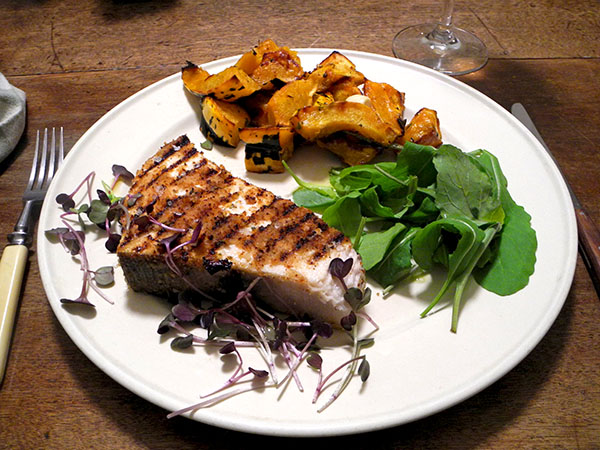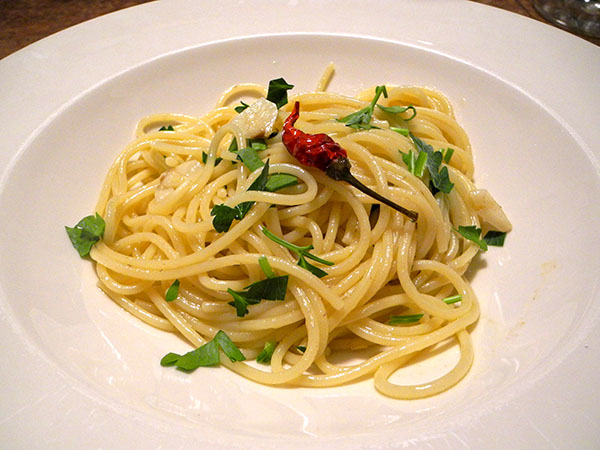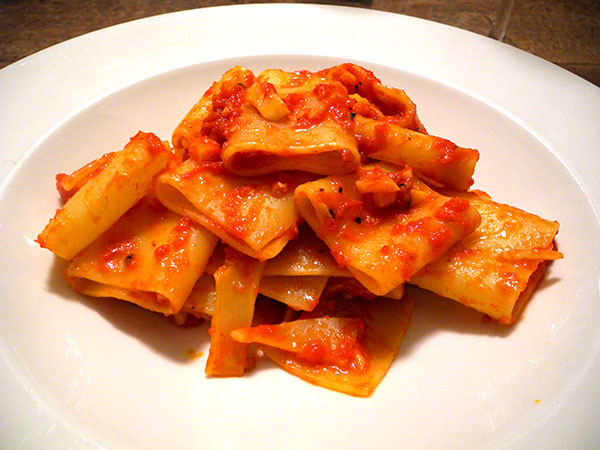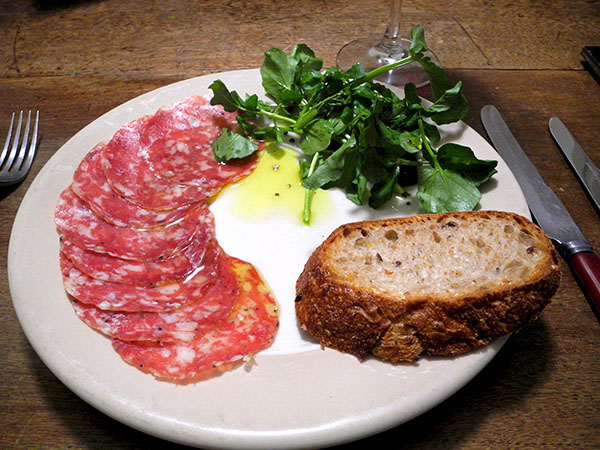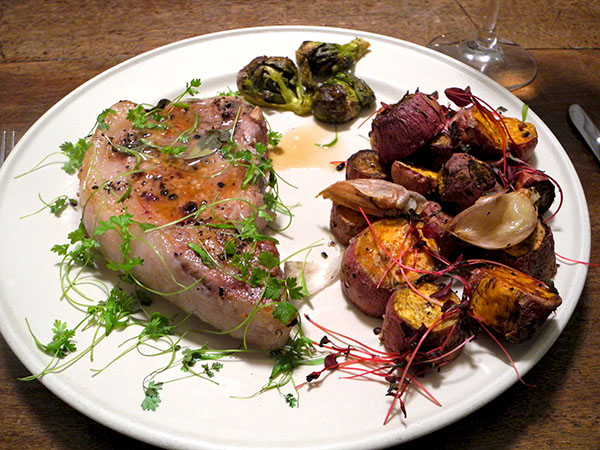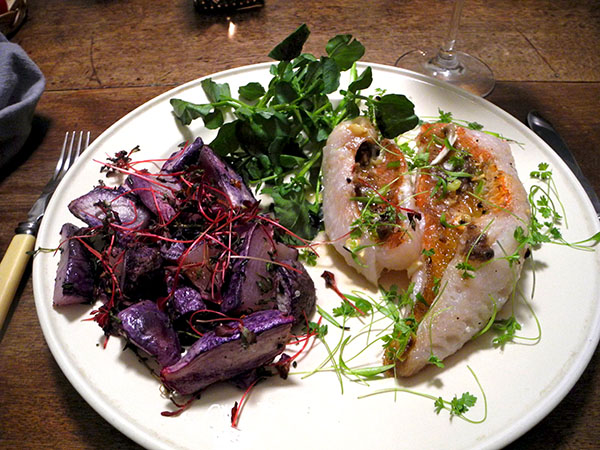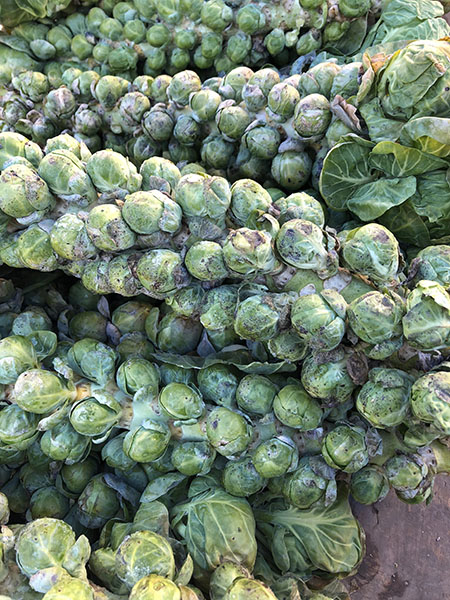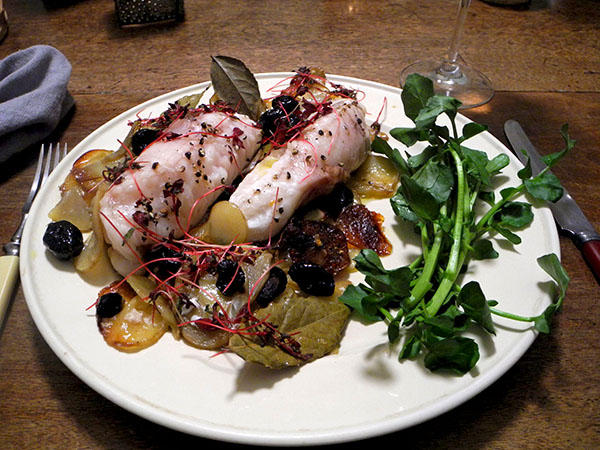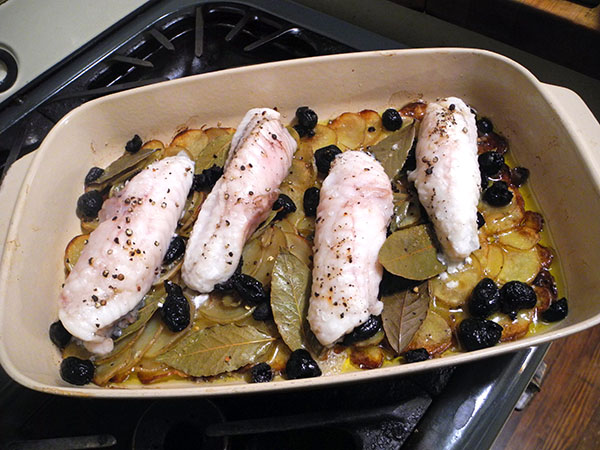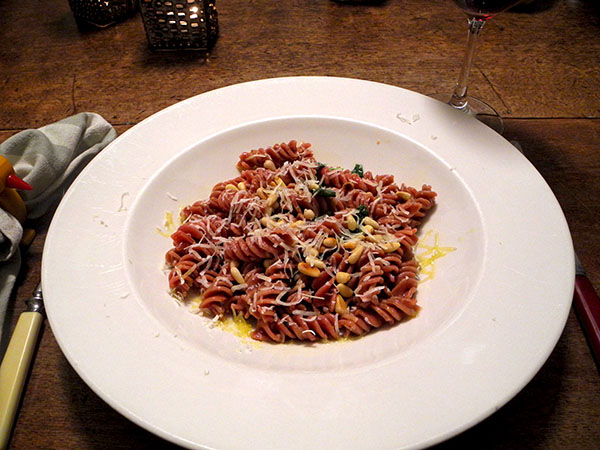
Sfoglini makes great pasta, and they use local grains and local vegetables with the flavored varieties. The beet fusilli is among our favorites. Last night I was very happy to find inspiration for another way to serve it, on line. The site I found provided merely the sketchiest of recipes and no quantities were cited, so I’ll outline here what I did with [most of] the elements that it included. Since I had no fresh goat cheese to stir into the mix, as suggested by the recipe, I used a little Parmesan, at the very end.
- eight ounces of boiled Sfolini Beet fusilli pasta, some of the cooking water reserved (by the way, this pasta only takes about 5 or 6 minutes to cook, and it goes to al dente with no warning), drained and stirred into a large heavy antique tin-lined copper pan in which about a tablespoon of juice from a Whole Foods organic lemon had been briefly stirred over low heat with 2 tablespoons of heated olive oil, about a tablespoon of zest from the same lemon and couple handfuls of baby arugula from Eckerton Hill Farm added to the mix and gently stirred in, along with a ladle or more of the reserved pasta cooking liquid, then a small handful of toasted pine nuts tossed in, the pasta served in 2 shallow bowls, with a little Parmigiano Reggiano Hombre from Whole Foods Market grated on top, and a bit of olive oil drizzled around the edges
- the wine was an Oregon (Willamette Valley) red, Scott Kelley Pinot Noir Willamette 2016, from Naked Wines
- the music was Mahan Esfahani performing Bach’s Goldberg Variations, on harpsichord
